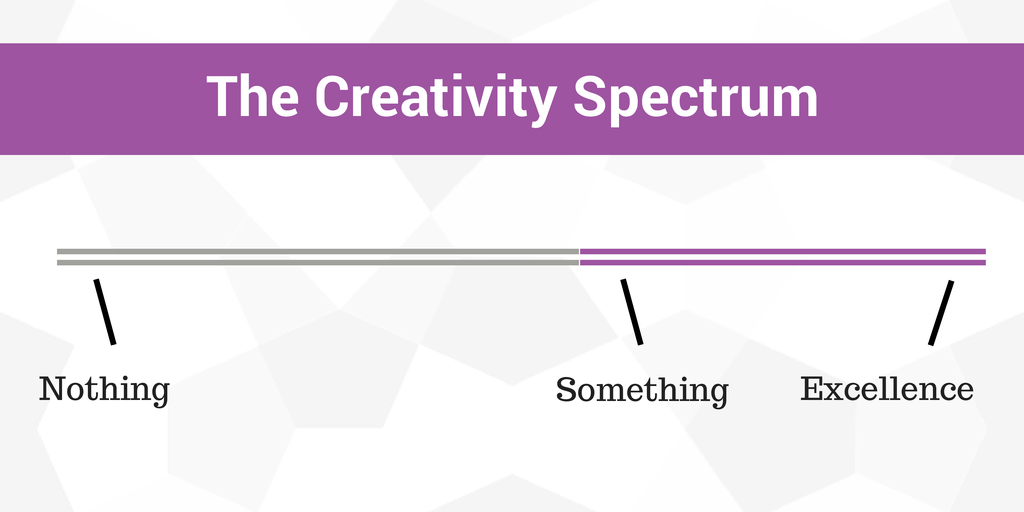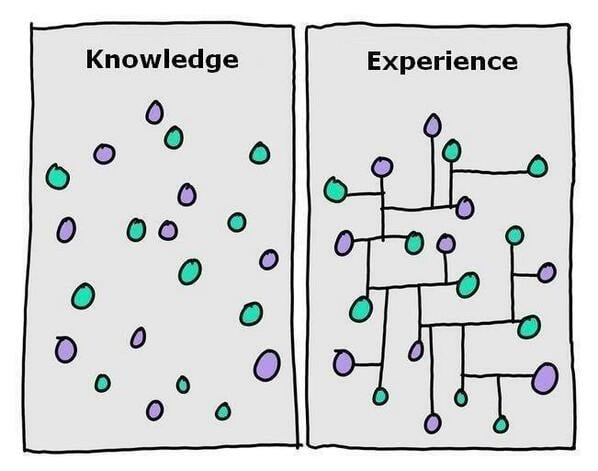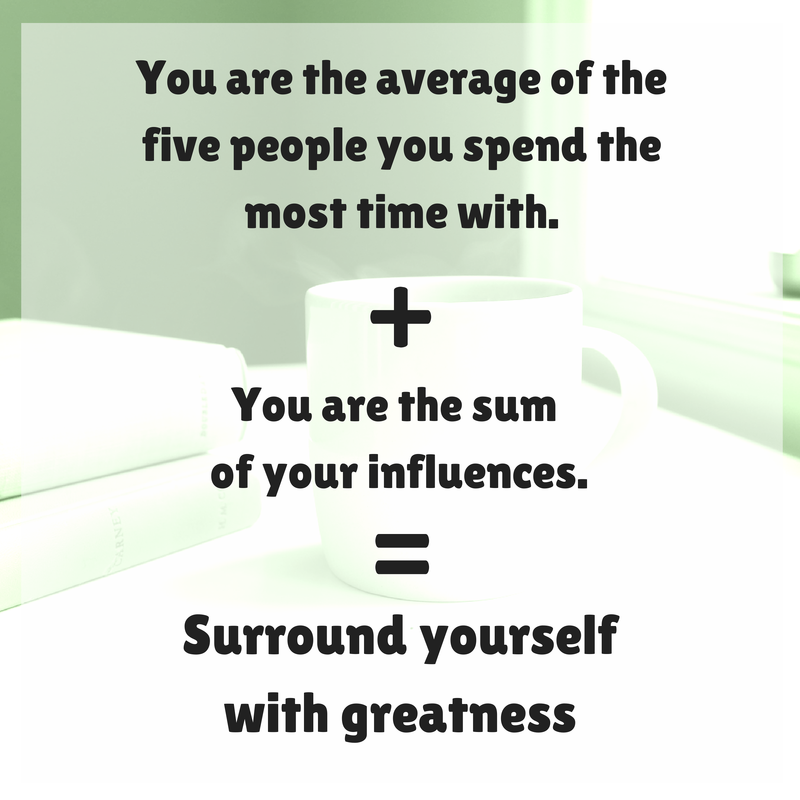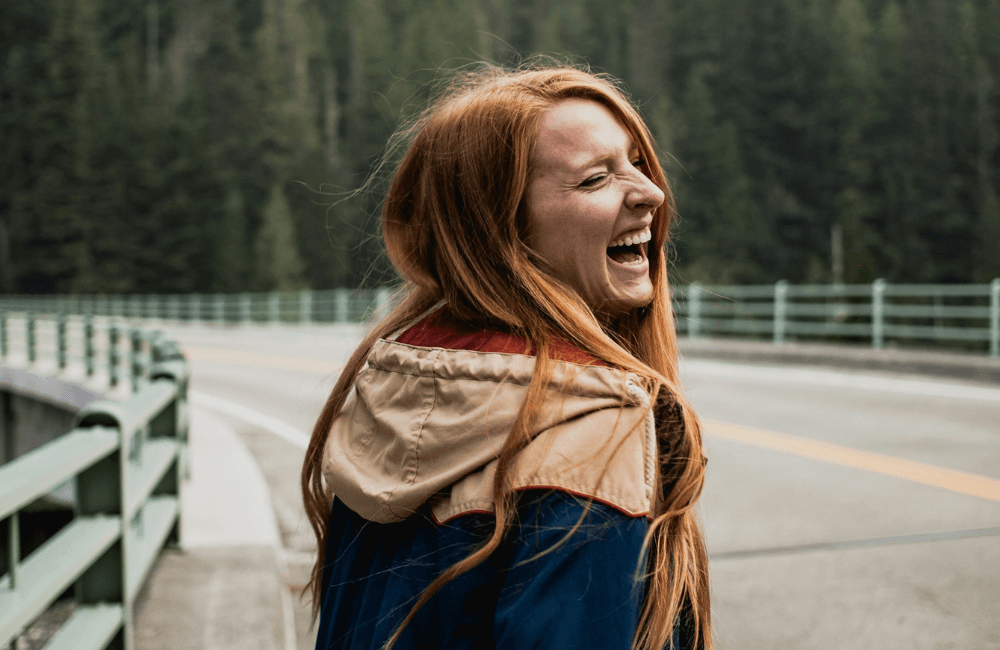
What I Wish I Knew About Creativity When I Was 20
Former VP of Marketing @ Buffer

Imagine you could go back in time and give your 20-year-old self a bit of advice on investing in the creative process, coming up with new ideas, and producing good, fun work.
What would you say?
I’ve thought a bit about this topic lately, as I reflect on how I’ve changed from the person I was in my twenties to the person I’ve become in my thirties. Creativity has become more and more important to me, both at work and at play. And the lessons I’ve learned along the way (and the ones I’m still learning) seem like something 20-year-old me would have liked to know.
Here’s what I’ve come up with for advice to the 20-year-old version of me on being creative.
1. You’re as creative as anyone
I’ve heard people tell me, “I’m just not that creative.” I don’t believe it. You are creative and ingenious and resourceful and brilliant. Creativity doesn’t have to be defined by the bounds of art or literature. Your creativity can reveal itself in so many different ways: parenting, relationships, wardrobe, problem-solving, ideas, shoelaces, Tumblrs, cooking.
Everyone is capable of creativity.
2. Never underestimate the value of a creative outlet
Is the work you’re doing feeding your need for creativity? There are seasons of life when it might not. In those seasons, it’s so incredibly useful to have a creative outlet on which to rely.
From experience, I can say that this is essential. I wrote for six years about nutrition and health, serious discussions about good fats and the colon. On the side, I wrote about sports, silly, creative stories about touchdowns and championships. All of it was writing—some that paid the bills, some that fed my joy.
The psychological research supports these types of creative pursuits. In a San Francisco State study measuring employees with a creative side project and those without, those with a creative hobby were more likely to be helpful, collaborative, and creative with their job performance. Best of all, side projects are unlike whatever you’d experience at work. They’re low-risk, low-pressure, and something you love doing.

3. Make time for creativity. The same time. Every day.
“I write only when inspiration strikes. Fortunately it strikes every morning at nine o’clock sharp.” – W. Somerset Maugham
If you want to be more creative, to come up with more ideas, and to have a more efficient creation process, schedule it.
Put creative time on the calendar.
Then show up every day.
The ballyhooed “lightning bolt of inspiration” might make it seem that these moments strike randomly, that you catch one in a bottle and keep yourself ready to go at a moment’s notice. This is all well and good. However, waiting around for creativity to strike might mean you never see it coming.
Instead, you can boost brain activity by keeping a consistent routine. Routine reinforces neural circuitry, and the more you work at the same routine, the stronger those connections become.
4. Embrace constraints
Though it might seem counterintuitive, constraints can help you be even more creative. Embrace these constraints, whichever way they come—constraints on your time, your resources, your energy. If you’ve got 20 minutes to be creative, it might be all the time you need.
Twitter is a great example: creativity in 140 characters or fewer. Some take this to an even deeper level with six-word memoirs, summing up a bio in only six words.
Six word memoir: “King size bed acquired. Marriage saved.” — Austin Kleon (@austinkleon) August 22, 2014
There are speed painters, coffee cup artists, and timed TED talks. These examples—and so many more —show that creativity is possible and sometimes preferable under the right constraints.
5. Trying and failing is better than never trying at all
What holds you back from creating something?
For many of us, it’s fear. Fear that something might not be good enough, unique enough or novel enough.
Overcoming this fear is a huge and important step. Start here: It’s okay to fail. In fact, it can be helpful to create something silly, strange, ugly, or useless because you’ve taken the step that so many people never do. You’ve created.
Author Clay Shirky noted the importance of the simple act of creating—creating anything, even a silly thing—in his book Cognitive Surplus:
The stupidest possible creative act is still a creative act. On the spectrum of creative work, the difference between the mediocre and the good is vast. Mediocrity is, however, still on the spectrum; you can move from mediocre to good in increments. The real gap is between doing nothing and doing something.

6. Be prepared to toss your best ideas
There’s a popular bit of writing advice that sounds really tough yet rings really true: “Kill your darlings.” In many cases, in order to move on with a creative pursuit, you’ll have to let a favorite pursuit—one of your darlings—fall by the wayside.
No hard feelings. Sometimes the idea is too grand to pull off. Other times, the timing just isn’t right. Perhaps it sounded really great in your head and looked a whole lot different on paper. Whatever the reason, don’t hold onto an idea too long. Make room for more.
7. Soak up all the influence you can
Become a culture sponge, a content sponge, a role model sponge. Have more experiences and interactions with life around you, and take note of what you see—particularly the stuff you like.
By distinguishing the creative things you love, you’ll soon discover your own tastes. You’ll get better at identifying what you like and what you don’t, and your personal creativity will take shape even clearer.
8. Collect what inspires you
Author Neil Gaiman understood the value of soaking up everything (see the point above). He also knew the value in noticing these sources of inspiration and collecting ideas when they came.
For me, inspiration comes from a bunch of places: desperation, deadlines… A lot of times ideas will turn up when you’re doing something else. And, most of all, ideas come from confluence — they come from two things flowing together. They come, essentially, from daydreaming. . . . And I suspect that’s something every human being does. Writers tend to train themselves to notice when they’ve had an idea — it’s not that they have any more ideas or get inspired more than anything else; we just notice when it happens a little bit more.
What might this look like? For me, it looks like a swipe file, a repository for ideas and the bits and bops that inspire me. I keep my swipe files in a WordPress draft on my website, on a visual online pinboard, and in our Buffer Trello board. Anything and everything that could one day be used for a creative burst, I find and collect.

9. Creativity is about making connections
This graphic by Hugh McLeod does a great job showing the impact that connections make between knowledge and experience. The same could be said for knowledge and creativity.

Creativity is just connecting things. When you ask creative people how they did something, they feel a little guilty because they didn’t really do it, they just saw something. It seemed obvious to them after a while. – Steve Jobs
Neurologically this is true, as researchers have found that the brain operates creatively when multiple areas of the brain are connected. We piece together our different experiences in such a way that creative ideas are born. In Steve Jobs’s case, he connected the dots between touchscreens, personal computing, user interface, and great design and ended up with some of the best mobile devices on the market.
10. Others will be better than you. And that’s a good thing.
I sometimes get the urge to stop and drop everything when I see someone doing something I love better than I can do it. Turns out, it’s not best for me that I be the best.
Have you heard the phrase, “If you’re the smartest person in the room, then you’re in the wrong room”? I think this can hold true for the authors you read, the musicians you admire, and the creatives you follow. Set up shop in a room where you will be motivated to achieve great things and to grow your creativity.
11. Surround yourself with greatness
You are the average of the five people you spend the most time with. And you are the sum of your influences. Put together, these pieces of advice offer a call to have amazing people in your life along with amazing experiences and influences.

Your job is to collect good ideas. The more good ideas you collect, the more there is to choose from when the time comes to be inspired and create.
12. Create without thinking
What do I think about when I write? Ideally nothing. I guess, sure, I’ll think about the next word to type or the direction the story’s headed. But I’m not thinking about how it will be received (will people love it? loathe it?) or whether I should be writing something else entirely or what I’ll be working on next..
Thinking leads to self-conscious thought. In the words of Ray Bradbury, “Anything self-conscious is lousy. You can’t try to do things. You simply must do things.” Think as little as possible.
13. It’s okay to create alone
Creative solitude might be a huge stumbling block to a young creator. So know this: It’s okay to create alone. There may be times for social and team collaboration, but there will also be plenty of times you create alone. Even after brainstorming together, you may find yourself creating solo. This solitude is often necessary, and you’ll learn to love it. Get comfortable with being by yourself, focusing, and creating.
14. Start something today
If you’re stuck on creating, take this bit of advice from Seth Godin. Start something. Anything. And for added motivation, put your start date on the calendar so you know you mean business.
Starting is like that. We can schedule for it. Thursday, April 3rd, 3:05…start something.
And you’ll feel even better when you get to another favorite Godin maxim: Ship it.
15. You’ll love the rush when you “ship it”
The dopamine pathways of the brain send feel-good hormones when we engage in an activity we enjoy—receiving new things, getting rewards, etc. Shipping your new creation can trigger a dopamine rush. There’s a huge happy feeling when you’ve shipped something you created. And when you link these feelings together day after day, you’ll start to long for the ability to create.
Get started. Finish. Ship. Repeat.
16. Go big with your goals
Many times, my creative ideas sound better in my head than they do once they’re created. And that’s okay. In his book Steal Like an Artist, Austin Kleon tells the story of Conan O’Brien and his take on the late-night talk show hosts, including himself.
Conan O’Brien has talked about how comedians try to emulate their heroes, fall short, and end up doing their own thing. Johnny Carson tried to be Jack Benny but ended up Johnny Carson. David Letterman tried to copy Johnny Carson but ended up David Letterman. And Conan O’Brien tried to be David Letterman but ended up Conan O’Brien. In O’Brien’s words, “It is our failure to become our perceived ideal that ultimately defines us and makes us unique.”
Shooting for the stars and missing is still a good thing. We gain the experience of pursuing something valuable and great, and we’re likely to find our own path of excellence along the way.
17. Create what you enjoy
This is maybe my favorite lesson on creativity. Create the things that delight you, entertain you, and motivate you. Whatever you make, let it be something you love. Create something that you enjoy, not something you’re under contract to make or something you think others would find pretty cool. For one, you may lose the motivation to finish it if things don’t go your way. But more importantly, there’s power in creating from a place of love and enjoyment. Your finished product will absolutely reflect the joy and happiness you put into it.
Conclusion
What advice would you give for someone seeking creativity tips? What have you learned along the way?
I’ve found a number of areas that have helped me be more creative on a regular basis, and I’m still coming up with new lessons day after day. I’d love to hear what you have to say in the comments, and if you’ve got any other ideas on what it takes to be creative.
Image credits: Death to the Stock Photo
Try Buffer for free
140,000+ small businesses like yours use Buffer to build their brand on social media every month
Get started nowRelated Articles

As a self-proclaimed tools nerd, I’ve tested out many of the ever-growing list of AI productivity tools on the market. These are the ones I keep coming back to.

Looking for some low-lift ways to make yourself happier? Here's some of the best research that we've found on personal happiness.

Personal brand experts walked this writer through exactly how to switch up her personal brand — and offered some more general advice, too.